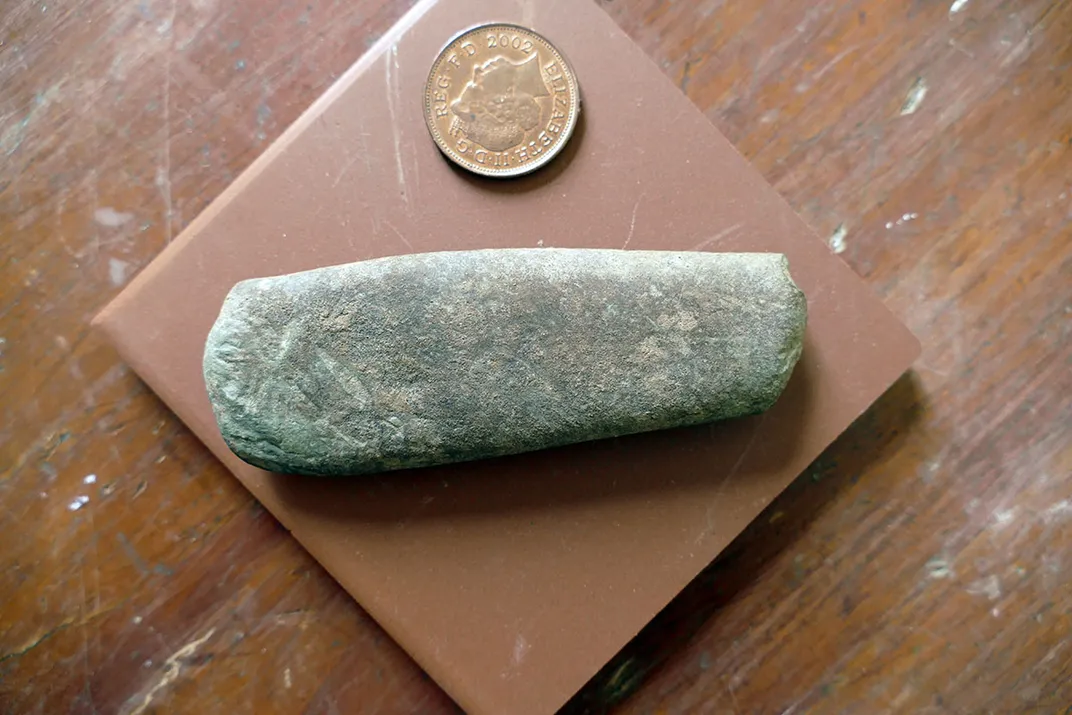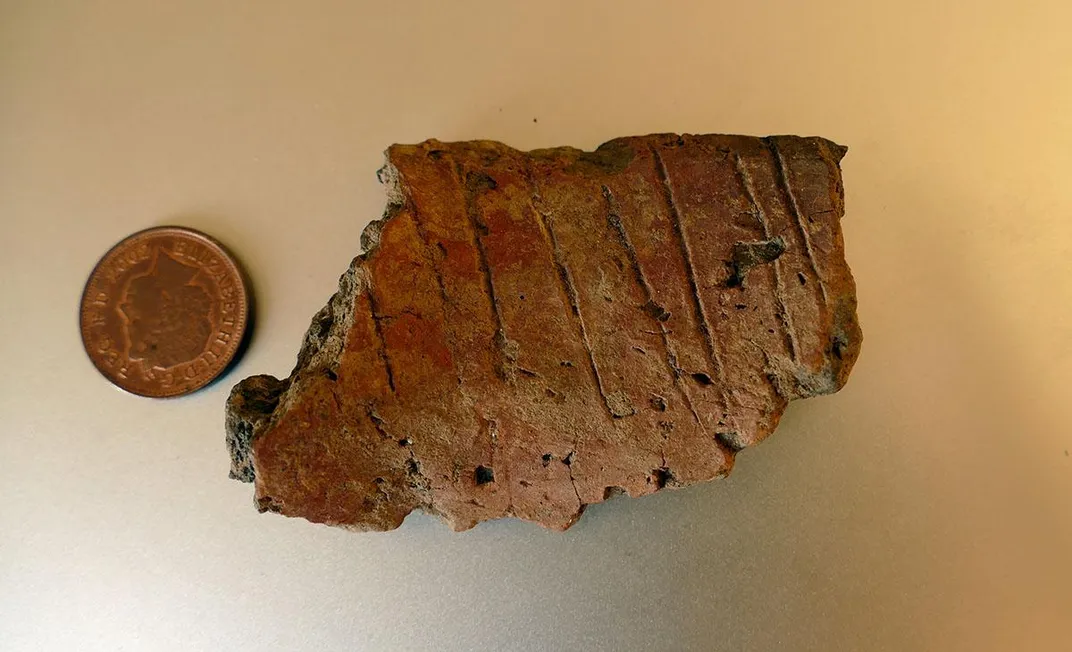Burrowing Bunnies in Wales Unearth Trove of Prehistoric Artifacts
Rabbits on Skokholm Island discovered Stone Age tools and fragments of a Bronze Age cremation urn
:focal(708x542:709x543)/https://tf-cmsv2-smithsonianmag-media.s3.amazonaws.com/filer/14/70/1470ef21-1047-4562-ae8e-0c4a4a2ec558/the-rabbit-hole-which-produced-the-new-prehistoric-finds-richard-brown-and-giselle-eagle-wtsww.jpeg)
Scholars studying prehistoric life in Wales recently got an assist from an unexpected source. As Steven Morris reports for the Guardian, rabbits making a burrow on Skokholm Island, two miles off the coast of the southwest county of Pembrokeshire, dug up two Stone Age tools, as well as early Bronze Age pottery shards.
Richard Brown and Giselle Eagle, seabird experts who serve as wardens of the otherwise uninhabited island, spotted the objects and sent photographs of them to archaeological researchers. Looking at an image of one of the artifacts, Andrew David, an expert in prehistoric tools, identified it as a 6,000- to 9,000-year-old Mesolithic beveled pebble that was likely used to make seal skin–clad boats or prepare shellfish.
“Although these types of tools are well known on coastal sites on mainland Pembrokeshire and Cornwall, as well into Scotland and northern France, this is the first example from Skokholm, and the first firm evidence for Late Mesolithic occupation on the island,” says David in a statement.
Per BBC News, Jody Deacon, archaeology curator for National Museum Wales, notes that the pottery shards came from a thick-walled pot probably used as a cremation urn some 3,750 years ago. Like the older beveled pebbles, these burial vessels are not unusual in west Wales but are the first artifacts of their kind found on the island.
Brown and Eagle first moved to the remote Celtic Sea island in 2013, as Neil Prior reported for BBC News at the time. Skokholm is part of the Wildlife Trust of South and West Wales, which purchased the island in 2006 for conservation as a national nature reserve.
Skokholm is normally open to a small number of overnight visitors interested in an off-the-grid nature experience, but during the pandemic, Brown and Eagle have been the only humans on the island. The two maintain a blog where they record wildlife observations and other happenings, including the recent finds.
Just one mile long and a half mile across at its widest point, Skokholm derives its Norse name, meaning “wooded island,” from the Vikings who settled there in the late 10th or early 11th century. Between the 14th and 16th centuries, the island served as a rabbit farm.
/https://tf-cmsv2-smithsonianmag-media.s3.amazonaws.com/filer/7c/d5/7cd5f8e5-6fdd-4581-9200-38256a5aad57/skokholm-island-from-the-air-on-5th-february-2018.jpeg)
According to Medievalists.net’s Danièle Cybulskie, this was a common medieval use of small islands, where rabbits could be raised for their fur and meat while being better protected from predators than on the mainland. Skomer Island, also off the Pembrokeshire coast, is known for its plentiful rabbits, whose heritage dates back to medieval Norman rabbit farmers.
Toby Driver, an archaeologist at the Royal Commission Wales who has worked on previous surveys of the nearby islands of Skomer, Grassholm and Ramsey, says the rabbits appear to have stumbled onto an early Bronze Age burial mound built over a much earlier hunter-gatherer site.
“It’s a sheltered spot, where the island’s cottage now stands, and has clearly been settled for millennia,” he adds in the statement.
Researchers plan to carry out an archaeological survey of Skokholm later in 2021, once Covid-19 restrictions are lifted.
“We know from past aerial surveys and airborne laser scanning by the Royal Commission that Skokholm has the remains of some prehistoric fields and settlements, though none has ever been excavated,” says Toby in the statement. “Now Skokholm is producing some amazing prehistoric finds.”
/https://tf-cmsv2-smithsonianmag-media.s3.amazonaws.com/accounts/headshot/Livia_lg_thumbnail.png)


/https://tf-cmsv2-smithsonianmag-media.s3.amazonaws.com/accounts/headshot/Livia_lg_thumbnail.png)